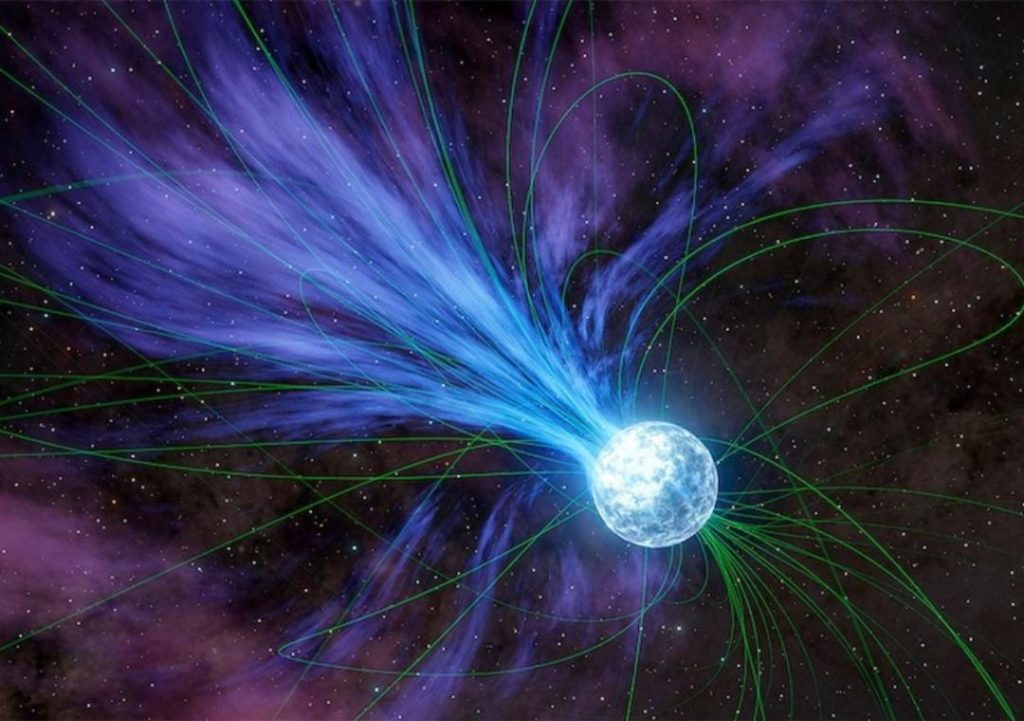
Gold & Platinum Created through Neutron Stars’ Explosions: Study
For centuries, humans have been fascinated by the origins of precious metals like gold and platinum. While gold has been a symbol of wealth and status throughout history, platinum is highly valued for its rarity and versatility. But where did these metals come from? Scientists have long been searching for the answer, and a recent study has finally provided a stunning revelation.
According to a study led by Columbia University student Anirudh Patel, magnetars or highly magnetized neutron stars are responsible for creating elements like gold and platinum in a cosmic event that occurred over 20 years ago. These magnetars, which are essentially extremely powerful and dense stars, exploded and released flares that contained these precious metals.
The study, which was published in the journal Nature Astronomy, suggests that these explosions happen approximately once per decade in the Milky Way galaxy and annually across the observable universe. This means that the creation of gold and platinum is a relatively common occurrence in the cosmos, although it may not always result in the formation of these metals in their pure form.
So, how exactly do magnetars create gold and platinum? The process begins when a massive star runs out of fuel and collapses in on itself. This collapse causes a massive explosion, known as a supernova, which releases an enormous amount of energy into space. Some of this energy is absorbed by nearby matter, causing it to heat up and eventually form new elements.
In the case of gold and platinum, these elements are formed when heavy elements like iron and nickel are exposed to intense radiation and high temperatures. This process, known as nuclear fusion, causes the atoms to combine and form new, heavier elements. Gold and platinum are both formed through the fusion of lighter elements, such as iron and nickel, under extremely high temperatures and pressures.
The study’s findings have significant implications for our understanding of the origins of precious metals. For centuries, scientists have believed that gold and platinum were formed through geological processes, such as the slow cooling of the Earth’s crust. However, this new research suggests that these metals may have been created in a matter of seconds through the explosive power of magnetars.
The discovery of magnetars’ role in creating gold and platinum also has important implications for the search for rare and exotic elements. Scientists have long been searching for these elements, which are essential for advancing our understanding of the universe and developing new technologies. The discovery of magnetars’ ability to create these elements could potentially lead to new ways of synthesizing them in the laboratory.
In addition to their significance in the field of astrophysics, the study’s findings also have important implications for the field of economics. Gold and platinum are highly valued for their rarity and versatility, and the discovery of their origins could potentially lead to new ways of extracting and processing these metals.
The study’s lead author, Anirudh Patel, said in a statement, “This research has important implications for our understanding of the origins of precious metals and the search for rare and exotic elements. By studying magnetars and their role in creating gold and platinum, we can gain a deeper understanding of the universe and potentially develop new ways of synthesizing these elements in the laboratory.”
In conclusion, the study’s findings provide a fascinating glimpse into the origins of precious metals like gold and platinum. The discovery of magnetars’ role in creating these elements is a significant breakthrough in the field of astrophysics and has important implications for our understanding of the universe and the search for rare and exotic elements.






